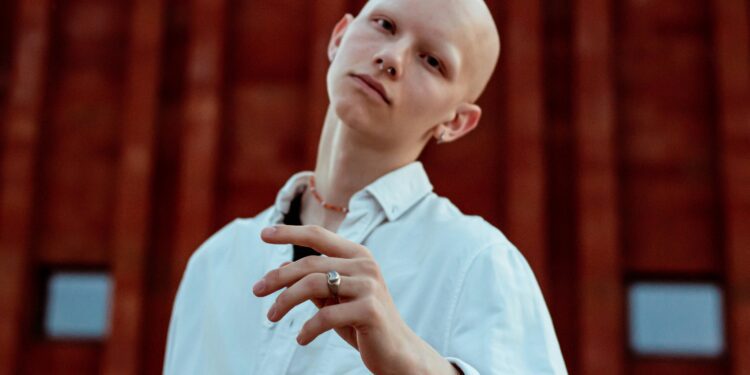In a world where algorithms now shape belief as much as biology, cancer patients are facing a new and insidious threat: misinformation masquerading as medical wisdom.
Over the past year, a disturbing trend has emerged on social media platforms, particularly TikTok, where self-styled health influencers have begun amassing millions of views by peddling unproven, often dangerous, “cures” for cancer. The rhetoric is compelling, the aesthetics clean and persuasive, and the impact—deeply harmful. Figures like Australian naturopath Barbara O’Neill and U.S.-based chiropractor Nick Zyrowski have emerged as high-profile disseminators of pseudo-scientific content. The consequence: patients questioning, delaying, or outright rejecting clinically validated cancer therapies.
A Public Health Emergency Disguised as Empowerment
What makes this phenomenon particularly dangerous is the seductive way it is framed. These influencers are not pushing conspiracy theories in a vacuum; they are repackaging wellness, autonomy, and distrust in institutions into easily digestible clips. Often using the language of empowerment—”take control of your health,” “don’t let Big Pharma dictate your journey”—they cloak misinformation in emotional resonance and aesthetic appeal. But beneath that surface lies a serious threat to evidence-based medicine.
According to a 2023 study in the Journal of Medical Internet Research, over 35% of trending health content on TikTok contains inaccuracies or outright falsehoods. When narrowed to cancer-related content, that number spikes even higher. Worse, this misinformation isn’t evenly distributed: vulnerable populations, particularly those with limited access to health literacy resources, are more susceptible to these narratives.
The Key Players in the Misinformation Machine
Barbara O’Neill, permanently banned from practicing in Australia, has gained a second life online promoting dietary cures and detoxes as viable alternatives to chemotherapy. Despite no formal qualifications in medicine or oncology, she enjoys a global audience and continues to offer services abroad and virtually. Similarly, Zyrowski frames cancer as a metabolic condition best addressed by fasting, keto diets, and vitamin protocols—claims not supported by oncologic consensus or randomized trials.
This form of digital evangelism capitalizes on frustration with modern healthcare: long wait times, opaque billing systems, and the cold mechanization of clinical encounters. In this emotional vacuum, wellness influencers offer a narrative of control. But this narrative, experts argue, is laced with peril.
The Real-World Consequences of Viral Pseudoscience
The downstream effect is measurable. Oncologists report increasing cases where patients arrive at consults with preconceived plans shaped more by social media than by science. In some cases, as reported by The Times, patients abandon chemotherapy regimens mid-course, opting instead for apricot kernels or coffee enemas.
This has sparked urgent concern in the global health community. Dr. Liz Gabbay, a digital health ethicist, calls it “the erosion of clinical trust by a thousand viral cuts.”
What Platforms Are (and Aren’t) Doing
TikTok has publicly stated that it is actively removing content that violates its medical misinformation policy. But enforcement remains inconsistent, and new accounts often pop up faster than old ones are taken down. Hashtags like #CancerCure and #NaturalHealing are still brimming with content that either contradicts medical guidelines or fails to disclose the lack of peer-reviewed evidence.
Even when content is removed, it often migrates to more obscure or less regulated platforms like Telegram, BitChute, or private Substacks. This phenomenon of “disinformation displacement” makes it increasingly difficult to track and mitigate the spread.
The Cultural Context: Why This Misinformation Spreads So Easily
This crisis doesn’t exist in a vacuum. It is fueled by a broader cultural moment defined by distrust in institutions, the decentralization of expertise, and an obsession with anecdotal success stories. Stories like “my aunt cured her Stage 4 cancer with celery juice” go viral precisely because they offer hope where medicine offers odds.
A 2022 Pew Research Center survey found that only 37% of Americans have “a great deal” of trust in medical scientists. That number drops among younger generations. In this vacuum, influencers step in with stories instead of data, hope instead of trials.
Toward a Counteroffensive: How Medicine Must Adapt
Public health campaigns need to evolve from sterile PSAs to emotionally resonant content that competes for attention in the same aesthetic and rhetorical space as influencers. Organizations like the American Cancer Society and Memorial Sloan Kettering have begun creating bite-sized, TikTok-ready educational videos, but the effort is still fragmented.
Moreover, doctors themselves must take up the mantle of digital advocacy. Physicians like Dr. Austin Chiang, a gastroenterologist and Chief Medical Social Media Officer at Jefferson Health, have demonstrated how clinical voices can thrive in digital spaces—without compromising scientific integrity.
Regulation: The Blunt Tool We Might Need Anyway
There’s growing debate around the need for tighter regulation of medical content on social media. The Surgeon General’s Office has already issued advisories on health misinformation, but calls are increasing for tech platforms to treat medical falsehoods with the same urgency as hate speech or political disinformation.
While critics argue that such moves edge dangerously close to censorship, others assert that allowing unchecked health misinformation is tantamount to endangerment. “Free speech ends where public health risk begins,” argues Dr. Naomi Becker, a legal scholar at Johns Hopkins.
Conclusion: The Long War Ahead
As the internet continues to decentralize expertise, the battle over medical truth is no longer fought in journals or courtrooms, but in comment sections and video feeds. The cancer misinformation crisis reveals the fragility of clinical authority in the age of influence—and the urgent need to redefine how that authority is earned, maintained, and communicated.
There is no simple cure for this crisis. But as with cancer itself, ignoring it won’t make it go away. And in this battle, what we don’t know—or don’t correct—can kill us.















